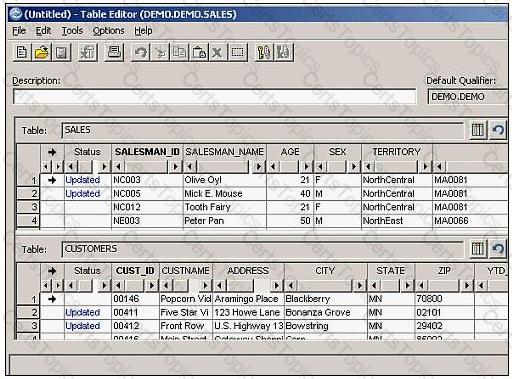When using the Age function within a Column Map to age date values in a source column, there are certain rules that must be followed regarding the data types that are supported. Which statement is correct?
Which statement is true regarding a data transformation process that uses a Column Map during an Insert/Load process?
What are two benefits of using Optim archiving for application decommissioning? (Choose two.)
You have exported an Archive Request and checked the 'export subordinate definitions' box. Which types of objects might you expect to find in the export file?
ODM/Optim Connect is supported to run on which UNIX/Linux operating system?
During the Convert process, for what are Column Maps used?
Given the command line syntax shown below: PR0CMND /R JOB=ERSONNEL' OUTPUT=PER.TXT MONITOR+ QUIET+ PR0CMND /R JOB=?ERSONNEL' OUTPUT=PER.TXT MONITOR+ QUIET+ Which task is performed?
Which statement describes advantages of using an Optim Insert process instead of a Load process to populate a test database?
Which of the following could be used as part of an Archive Request?
When positioning ODM/Optim Connect as a mechanism to view archived data, which capability would you promote?
Which of the following is NOT an attribute of a Column Map?
Click the Exhibit button.

Using the Optim Editor as shown in the exhibit, you have made multiple changes on each of the updated rows in the SALES and CUSTOMERS tables. You now decide that you want to undo the last change to row 1 in SALES. What should you do?
You can specify the default minimum retention period for protecting Archive Files on Centera from deletion. How is the minimum retention period calculated?
Which statement is correct with respect to setting expectations around archive access and reporting?
Optim relationships are used by all Optim tools. If multiple relationships exist between a pair of tables, which two statements are true? (Choose two.)
What identifies the tables, relationship traversals, and selection criteria for the data to be archived?
Which databases are directly supported on distributed platforms for Optim Test Data Management?
You are having an issue with your Optim Server (running on Linux) and IBM Support has asked you to enable tracing. Where would you go to enable tracing on the Optim Server?
A customer wants to Decommission their mainframe. Which scenario will Optim address?